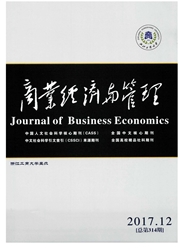

 中文摘要:
中文摘要:
在2030年碳达峰的背景下,经济增长与环境影响能否及时脱钩,是决定我国经济能否持续发展的关键。文章基于Tapio脱钩理论的研究视角,分析了环境规制对经济增长与环境污染脱钩产生影响的作用路径,并实证检验了环境规制差异影响脱钩状态的收敛情况。结果表明:递增的环境规制有助于经济增长与环境污染脱钩,且这种促进作用主要是通过倒逼企业调整生产方式实现的;环境规制对脱钩状态的影响既与自身规制强度有关,也受到政府科技投入的影响,需综合权衡规制强度和绿色科技投入强度,以实现最有利于脱钩的影响作用;环境规制对于东部沿海城市和内陆城市的脱钩影响存在明显的差异,表明环境规制政策需要针对不同区域特征来制定。
 英文摘要:
英文摘要:
This paper analyzes the effective path of environmental regulation on the decoupling between economic growth and environmental pollution from the perspective of Tapio decoupling elastic theory. It also estimates the different decoupling convergence states led by different environmental regulations according to the System GMM estimation method. The results show that: (1) increasing environmental regulation contributes to the decoupling between economic growth and environmental pollution, and the promoting effect mainly achieved by adjusting the way of production; (2) the impact of environmental regulation on the decoupling state is not only related to the intensity of its own regulation, but also influenced by the government's investment in science and technology. Therefore, it is necessary to comprehensively balance the intensity of environmental regulation and the green technology investment ; (3) there are obvious differences in the impact of environmental regulation on the decoupling between the eastern coastal cities and inland cities, which indicates the proper formulation of environmental regulation policies based on the different regional characteristics.
 同期刊论文项目
同期刊论文项目
 同项目期刊论文
同项目期刊论文
 期刊信息
期刊信息
